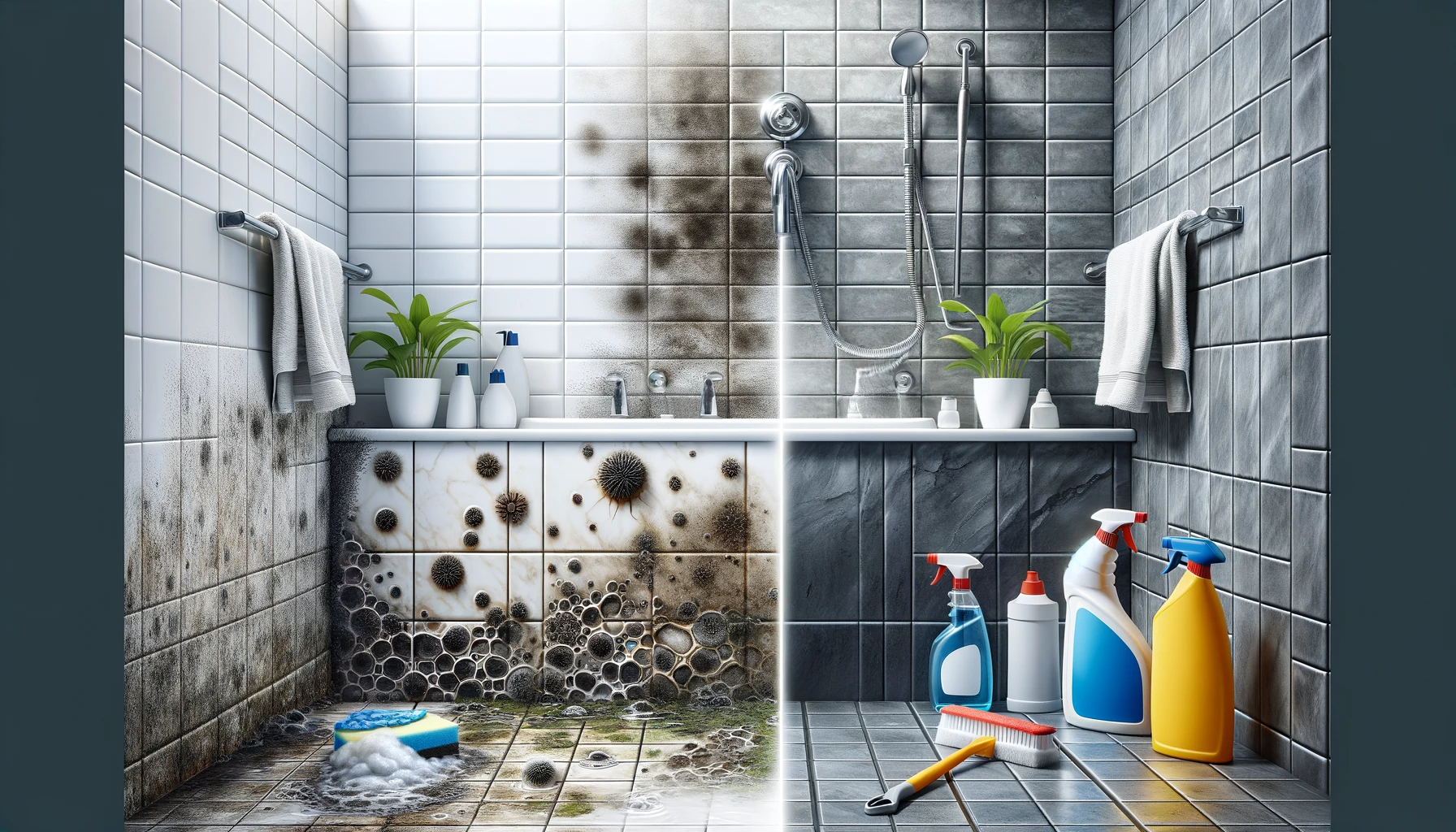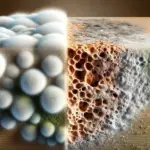Mold on tiles is a common problem; cleaning and preventing it can be done quickly and easily if you take the right steps. In this article, you’ll learn what mold is, how to prevent it from taking over your tiles, and effective cleaning products that can help eliminate existing mold.
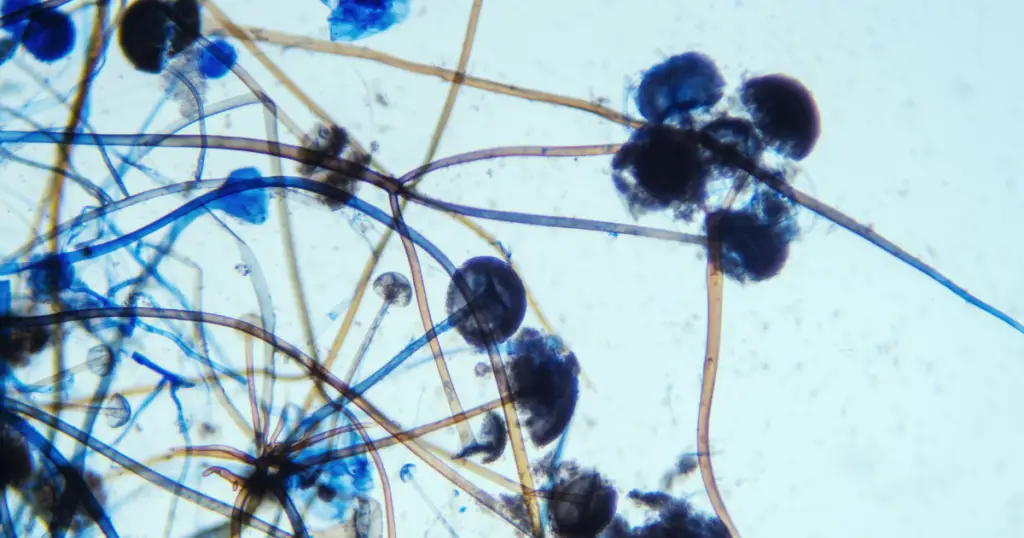
What is mold, and how can it affect you?
Mold is a fungus that thrives in wet spaces like bathrooms, basements, crawl spaces, and kitchens. It needs warmth, darkness, food, and humidity to grow, and it is composed of tiny spores that travel through the air and can land on any surface to begin growing.
Without proper moisture control within homes, large colonies of mold can develop over time, leading to various health risks like allergies, respiratory irritation, headaches, nasal and sinus congestion, eye irritations, fatigue, and asthma. It can also cause damage to the structure of your home, where it grows due to its release of enzymes that break down materials like wood paneling or drywall over time.
Your home may be vulnerable to mold growth, so you must be mindful of possible signs and take action if necessary. Tile grout, in particular, can provide an ideal environment for mold development due to its regular contact with moisture and lack of light exposure.
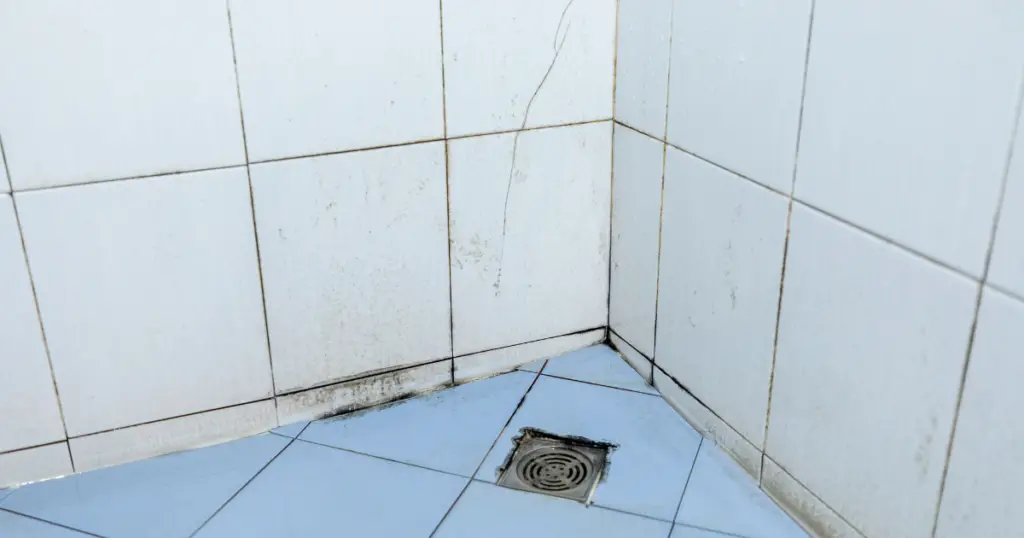
What causes mold on tiles?
Mold on tiles usually occurs when moisture or dampness accumulates. This could be due to condensation, spilled liquid, or water buildup in grout lines. When the humidity and temperature in an area are favorable, mold spores can settle on the tile and quickly reproduce.
Bathroom tiles are particularly susceptible to mold due to their high moisture and temperature level. Poor ventilation, leaks, seepage, or inadequate cleaning can also contribute to mold buildup on bathroom tiles.

Where does mold grows in the shower?
Mold can manifest in a wide array of places inside the shower; however, the most frequent spots for mold to thrive are:
Grout lines
Moldy grout is the most common problem on floors. These narrow spaces between tiles can easily become damp and let the mold set in.
Tile surfaces
Unsealed tile can hold water droplets which provides an ideal environment for mold.
Caulking
If caulking is not sealed correctly or regularly cleaned, it can attract and harbor mold spores.
Silicone sealants
Poorly applied sealants, or those cracked or with tiny holes, can allow water to seep underneath and encourage mold growth.
Shower curtain
Mold growth can also occur on shower curtains, especially if they are made of fabric. The water droplets that form on the curtain and pool at the bottom provide an ideal environment for mold spores. If you notice any dark spots or damp patches, it could be a sign of mold growth. It is important to clean your shower curtains regularly with hot water and detergent to reduce the risk of mold infestations.
Shower walls
Poorly sealed shower walls can also be vulnerable to mold growth. Warm and humid environments can encourage bacteria and fungi growth, so it is important to check the walls for any signs of discoloration.
Shower Tiles
Mold on shower tiles is prevalent since the moist environment provides perfect conditions for mold spores to thrive. Appearing as grey, black, or green spots, the mold will often appear along grout lines and in crevices. In some cases, it may even spread to other nearby surfaces, such as walls and floors.
Bottles in the shower
Bottles and containers not regularly cleaned can also lead to mold growth. It’s important to prevent soap scum from building up on the bottles because that can mask a moldy area.

Cleaning tips for moldy grout, walls, and tile
Cleaning mold can be a tricky and often hazardous task. It is important to protect yourself before cleaning it, as the spores released can cause allergies and other adverse health effects. To ensure your safety, restrict your cleaning activities to an area no larger than 10 square feet. The tips below can be used when treating walls, tiles, or grout.
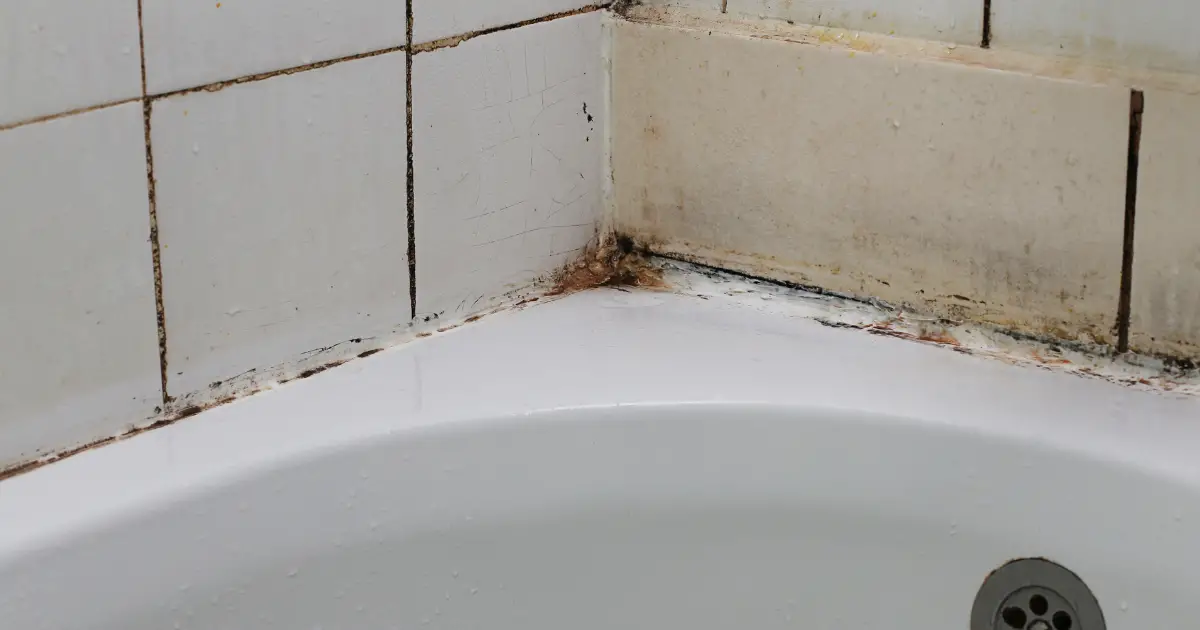
Clean with a Commercial Anti-Microbial
An EPA-rated anti-microbial product will have lab-tested proven results. Whenever possible, we recommend using one of these commercial products.
You must follow the directions precisely as they are written on the label.
Clean mold with Baking soda & Hydrogen Peroxide
- Create a baking soda paste by combining two parts hydrogen peroxide with one part baking soda in a bowl.
- Apply the paste onto the affected area using a brush or soft cloth, ensuring it is spread evenly across the surface of the tiles and grout.
- Allow the paste to sit for approximately 15 minutes before scrubbing the affected area with a stiff bristle brush or a damp sponge.
- Rinse off all of the cleaning solutions with warm water
- Dry the affected area thoroughly.
- To prevent mold growth, spray undiluted vinegar onto the affected area and wait for it to completely dry.
Clean mold with Bleach
- Create a solution of one part bleach to three parts water in a spray bottle.
- Spray the solution directly onto the affected area and let it sit for 10 minutes.
- Scrub the affected area with a brush or soft cloth dipped into the solution until all visible areas of mold have been removed.
- Rinse off all of the cleaning solutions with warm water.
- Dry the affected area thoroughly.
Clean mold with Tea Tree oil
- Create a solution by combining five parts of warm water with one part of tea tree oil in a spray bottle.
- Spray the solution directly onto the affected area, let it sit for 10 minutes, and scrub it with a scrub brush or cloth.
- Rinse off all of the cleaning solutions with warm water
- Dry the affected area thoroughly.
How to remove mold from shower caulking?
If you have a black mold problem in your shower caulk, the best solution is to remove and replace it with a high-quality, mold-resistant caulk. This will help protect the tile and walls behind it from water damage and further growth of mold. Although this might seem intimidating and time-consuming, it is simple.
To complete the job, start by carefully cutting away any excess caulking around the edges of the shower. Then use a putty knife or similar tool to scrape off the remaining caulking. Once the old caulk has been removed, thoroughly clean the area before applying a new sealant layer. Let it dry completely before using your shower again.
If you are uncomfortable removing and replacing the caulking, you can try an alternative method that involves cleaning affected areas with baking soda paste, tea tree oil, or bleach solutions.
Note that this may not get all the mold out as the caulking may be contaminated, so it is essential to remove and replace the shower caulk if possible, entirely.
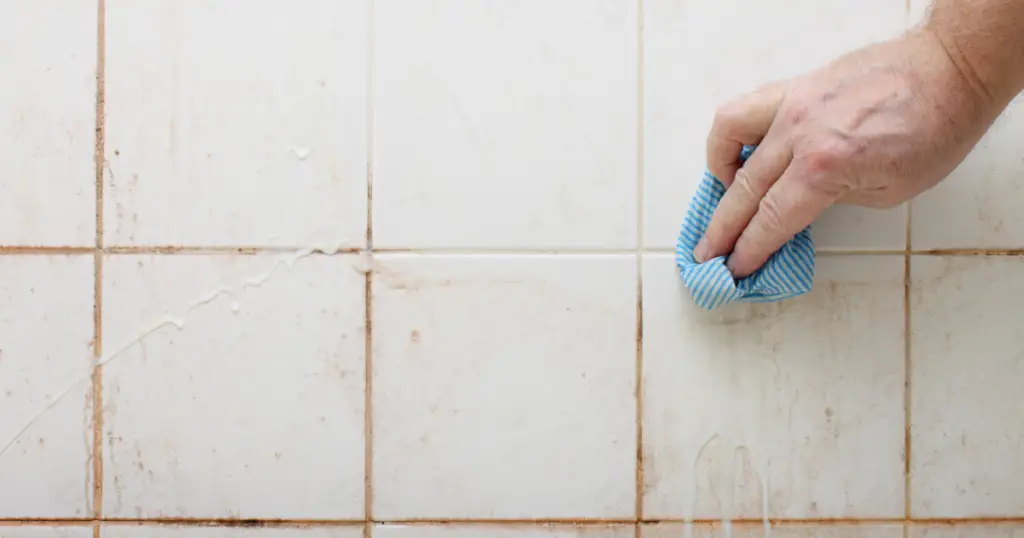
What kills black mold on tile?
To safely and effectively kill black mold on tile, you’ll need the following Protective equipment:
- Safety glasses or goggles;
- Rubber gloves;
- Disposable mask;
- Protective clothing;
Bleach can kill mold, and is inexpensive and commonly available. We also highly recommend using a commercial anti-microbial product because it has been lab tested for the directions on the label. Another benefit of a commercial product is the lower VOCs (Volatile Organic Compounds) which can be dangerous when left to linger in the air.
If you opt for a commercial product, follow the directions on the label. Otherwise, you can follow these directions when using bleach.
If you want to use bleach to remove mold, it is best to dilute it with water at one cup of bleach per gallon of water.
- Put on safety glasses, rubber gloves, and protective clothing.
- Prepare a cleaning solution by combining one cup of bleach with one gallon of warm water. Mix one teaspoon of tea tree oil with one cup of warm water for an alternative solution.
- Using a sponge or soft brush, work the cleaning solution into the contaminated tile area and allow it to sit for several minutes.
- Scrub the affected area with a sponge or soft brush until all visible mold is removed from the tile surface.
- Rinse off all of the soapy cleaning solutions with warm water.
Can I mix bleach and vinegar in a spray bottle to kill mold?
When it comes to killing mold, bleach and vinegar can both be effective solutions. However, you should never mix these two ingredients as bleach can produce toxic fumes, which is dangerous for your health.
Use the mixture to scrub away the mold and then rinse it with clean water afterward.
Vinegar can also be used as an effective mold killer, although unlike bleach it doesn’t have the same effectiveness. To use vinegar to kill mold, simply spray the area with undiluted white vinegar and let it sit for several hours before wiping it with a damp cloth or scrubbing away the visible mold.
Is bleach or vinegar better for killing mold in the shower grout?
One of the most common questions people have when it comes to mold removal in their shower grout is whether to use bleach or vinegar.
If you are dealing with stubborn mold, using bleach can be more effective. To do this, mix one cup of chlorine bleach with one gallon of water and use this mixture to scrub away at the visible mold. Rinse off afterward with clean water and make sure that you ventilate your bathroom well before and after using bleach.
While distilled white vinegar can help prevent mold from growing, it doesn’t effectively kill existing mold. To achieve
the best results, apply undiluted white vinegar directly to the area after cleaning and let it air dry. Make it a weekly routine to stop the spread of mold and protect your home.
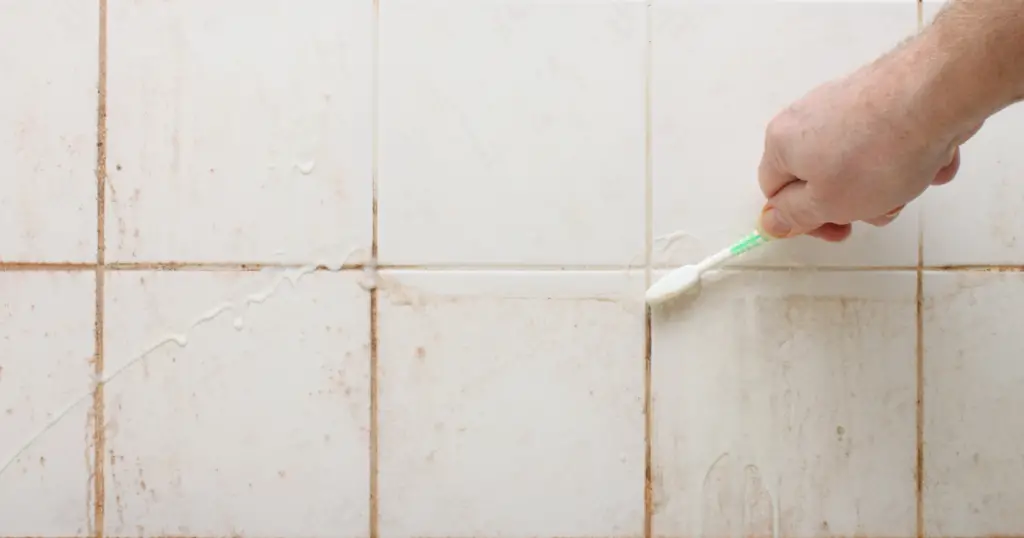
How can I prevent mold in tile grout?
Mold in tile grout is one of the most common problems homeowners face. Fortunately, it’s relatively easy to prevent mold in tile grout if you know what to do. Here are some simple steps you can take to keep your tile grout clean and free from mold:
- Clean your tile regularly with a mild detergent and a soft brush. Be sure to scrub well along the grout lines. Rinse thoroughly after cleaning and dry with a clean cloth.
- Wash away soap residue by using white vinegar or an equal parts solution of water and bleach. This will help discourage the growth of molds.
- Seal your tile grout with an appropriate sealant designed for use on bathroom and kitchen surfaces. This will protect the grout lines from moisture buildup and mold growth.
- Remove any mold immediately by scrubbing it away with a stiff brush and then wiping it down with bleach or vinegar solution, as described above.
- Use an exhaust fan during showers or baths to help reduce moisture buildup in tiled areas, which can otherwise lead to the growth of molds.
- Avoid leaving wet objects such as sponges, towels, rags, or mops on tiled areas where they’ve been exposed to water for extended periods since this could encourage further growth of molds.
- Consider investing in a dehumidifier that can help draw out excess moisture and prevent mold from growing in your home.
What can I spray in my shower to prevent mold?
- White vinegar: Undiluted white vinegar is an effective spray to prevent mold in your shower and other home areas.
- Hydrogen peroxide: This natural solution can kill mold and bacteria lingering in the shower, leaving it clean and sparkling.
- Baking soda: Sprinkle baking soda onto the wet surfaces after showering and before wiping away any excess moisture.
- Tea tree oil: This essential oil has antifungal properties that can help combat mold growth in the shower. Mix two teaspoons of tea tree oil with two cups of water, then spray it on the affected areas of your shower.
- Bleach: Bleach is a powerful disinfectant that kills mold spores and keeps them from reappearing in your shower.
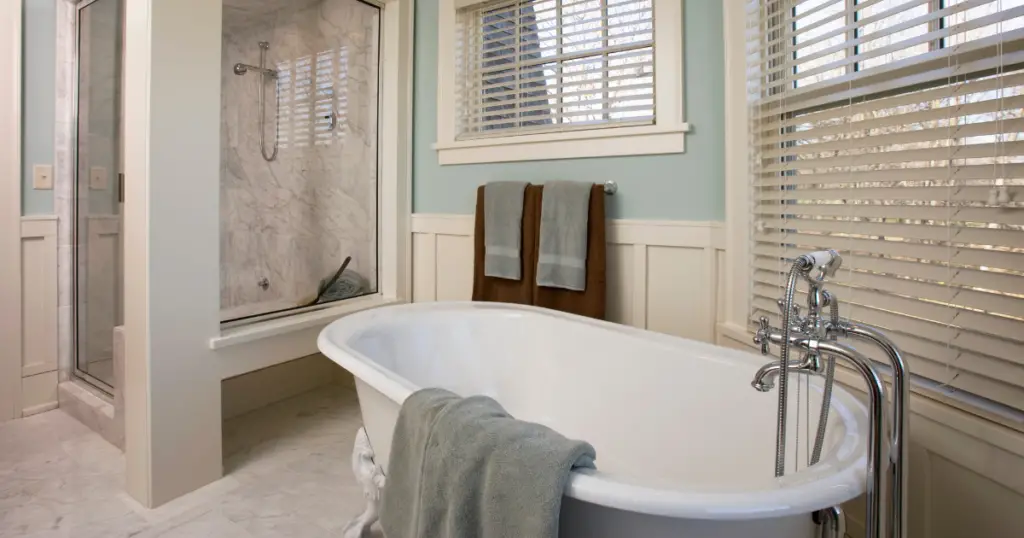
Call a Professional
Sometimes, it may be necessary to call a professional for mold removal. A trained mold remediation specialist can identify and remove any existing mold and help you find the root cause of the problem and implement methods to prevent it in the future. It’s important to hire a certified mold removal specialist to ensure the job is done correctly and safely.
[/et_pb_text][/et_pb_column][/et_pb_row][/et_pb_section]
